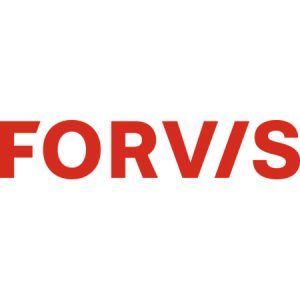Where has the time gone? Unbelievably, the industry is six short months away from adopting CECL. Thankfully, the six years since CECL was announced have been quiet, relatively straightforward years allowing you and your bank time to prepare.
But it is now time to put the finishing touches on your CECL journey. Whether your CECL model is being developed in-house or through third-party software, implementation can be challenging, complex, and unique to each adopter. As a model is being built, an institution should assemble documentation required to support key assumptions and decision points in the estimate of expected credit losses. While thorough and complete documentation will require significant time and effort to produce, it will provide value and time savings during senior management, board, regulator, and auditor reviews.
Why Document?
Documentation throughout implementation is a critical yet often overlooked component of a successful CECL implementation process. Although effective documentation requires time and resources, there are many benefits that outweigh these costs. Such benefits include:
- Meeting disclosure requirements
- Enhancing model understanding
- Assisting in exams, audits, and model validations
- Supporting policy updates
- Creating a repeatable allowance calculation process
Regulators and auditors will expect organizations to understand their model and be able to articulate why it is appropriate for their institution. Documenting key assumptions and decision points demonstrates that management has an understanding of their CECL model. Without thorough documentation regarding these assumptions and decision points, it will take auditors and regulators more time to align the model with the standard. The added time can lead to more expense and frustration for the institution. Further, strong documentation will allow institutions to better mobilize for additional changes to the model and its assumptions in the future. Proper documentation should create an allowance calculation process that can be replicated, particularly if there is turnover in key positions involved in CECL processes. Investing the time and resources today in the documentation process will help an institution reduce costs and increase efficiencies in the future.
What to Document?
When considering what items to document, financial institutions should think about what information is needed to ensure the process is replicable. This includes recording all key model decision points, all inputs and assumptions, and management’s assessment of the reasonableness of inputs and assumptions. Starting the documentation process early will help lead to a less stressful and more successful adoption process.
Documentation should describe an institution’s journey from start to finish in implementing the standard. Examples of key phases and items to document in the planning phase include:
Planning & Project Development
- CECL Committee team or members
- The role/responsibilities of each individual team member
- CECL implementation estimated timeline
- Determination of in-scope assets and applicability
- Consideration of available-for-sale and held-to-maturity securities
Data Gap Analysis
- Data fields considered and used
- Years, format, and availability of historical data available
- Reliability of data fields used (consideration of completeness and accuracy)
- Determining completeness of future data and descriptions on how the data will be accurate
- Data source, relevancy, and reliability considerations for economic forecasts and current condition
Pooling Segmentation
- Size of each segment relative to the portfolio in terms of dollar value and number of loans
- Risk characteristics and underwriting guidelines associated with each segment
- Appropriateness of segments based on size and risk factors
- Accessibility of data relating to each segment now and in the future
- Reconciliation of loan codes to CECL segments
Model Selection & Development
- Models considered and appropriateness of model selected
- Considerations of in-house versus outsourced models
- Determination of historical loss rate and historical loss period
- Current unfunded commitments and estimated future funding percentages
- Future forecast data considered and relationship with risk of segment or portfolio
- Qualitative factor descriptions and relevancy to segments or portfolio
- Prepayment speed assumptions, development process, and reasonableness
- How incomplete or unavailable data was supplemented or addressed
During pre-implementation, it’s critical to invest the time and resources to document management thought processes as they plan, gather data, and make key decisions regarding model selection and development. Documenting the steps from planning to model selection will support the conclusions made as organizations move into the model finalization and post-implementation period.
The following are examples of key phases and items to document in the post-planning phase as institutions move from model selection into finalization and beyond:
Model Finalization
- Conclusions on parallel run results including reasonableness of output, review processes, and benchmarking
- Description of model adjustments made and appropriateness
Policies, Procedures, & Controls
- Listings of policies updated and reviewed
- Discussion of IT processes impacted (user access, change management, etc.)
- New controls related to CECL and corresponding control owners
Disclosures & Call Report
- Review process of related CECL disclosures, including reviewer sign-offs and dates
- Documentation dates and descriptions of discussions surrounding GAAP disclosure changes
- Call report changes including phase-in capital plan
- Although this list is not comprehensive, it includes key items that can help build a strong foundation for CECL documentation.
How to Document?
Management’s goal for CECL documentation should be to describe the process of going from segmentation and data analysis to the model selection; while documenting the key inputs, assumptions, and decision points. This documentation can take various forms but, ultimately, the key is to make it clear, organized, and thorough. Some common formats include descriptive narratives, internal memos, and policies and procedures. In addition, it is important to create regular documentation checkpoints (whether biweekly, weekly, etc.) to update documentation as you proceed through the CECL implementation process.
Documentation should describe how each point in the CECL road map, correlates back to the accounting standard. Management decisions should be clearly outlined and include detail on why those decisions are appropriate and how they influence the model. When data is unavailable or qualitative decisions are made, documentation should note associated assumptions and considerations of materiality. This information will support management’s conclusions at the end of implementation and allow for a more complete and accurate documentation of the process.
Conclusion
Financial institutions should invest the time and resources to document the thought process, decisions, and rationale for CECL implementation. This documentation will allow institutions to justify the appropriateness and relevancy of decisions made, enhance institutional understanding of allowance calculations, and better prepare organizations to meet the requirements of regulators and auditors.







